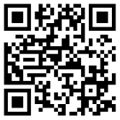我们导读:2009年11月12日,欧盟食品安全局降低了六种食用色素的ADI值。
原文报道:
EFSA updates safety advice on six food colours
After reviewing all the available evidence, the European Food Safety Authority’s scientific panel on additives, the ANS Panel, has lowered the Acceptable Daily Intakes (ADIs) for the artificial food colours Quinoline Yellow (E104), Sunset Yellow FCF (E110) and Ponceau 4R (E124).[1] As a result, the Panel concluded that exposure to these colours could exceed the new ADIs for both adults and children.
The Panel found that the currently available data did not require a change to the existing ADIs for the three other colours evaluated – Tartrazine (E102), Azorubine/Carmoisine (E122) and Allura Red AC (E129). According to the Panel, only some children who consume large amounts of food and drink containing Azorubine/Carmoisine or Allura Red AC could exceed the ADIs for these colours.
John Larsen, the Chair of the ANS Panel, said: “Many food colours have been in use for decades since their initial approval and so after such a long period of use we are now looking at the overall data available, including any new evidence on their safety, to help protect European consumers. We are doing this work systematically for all food additives, and have started with these colours for which some concerns have been raised.”
The six colours re-evaluated by the Panel can be used in a range of foodstuffs including soft drinks, bakery products and desserts. The Panel concluded that one of the colours, Tartrazine, may bring about intolerance reactions – such as irritations to the skin – in a small part of the population. For the remaining five colours (Quinoline Yellow, Sunset Yellow FCF, Ponceau 4R, Azorubine/Carmoisine and Allura Red AC), no firm conclusion could be drawn on a possible link with intolerance reactions from the limited scientific evidence available.
EFSA is currently assessing the safety of all individual food additives which are approved for use in the EU, starting with food colours. The European Commission asked EFSA to consider these six colours as a priority after a study was published by Southampton University (McCann et al) in 2007 – the so-called “Southampton study” – linking certain mixtures of these colours and the preservative sodium benzoate with hyperactivity in children.
John Larsen added: “We have now reduced the ADIs for three of the six colours we assessed, but for different reasons in each case as different data were available on each individual compound. The data which are currently available – including the Southampton study itself – did not substantiate a causal link between the individual colours and possible behavioural effects.”
EFSA’s scientific advice will help to inform any follow-up action to be taken by the European Commission and the EU Member States.
详情见:http://www.efsa.europa.eu/EFSA/efsa_locale-1178620753812_1211903038267.htm



